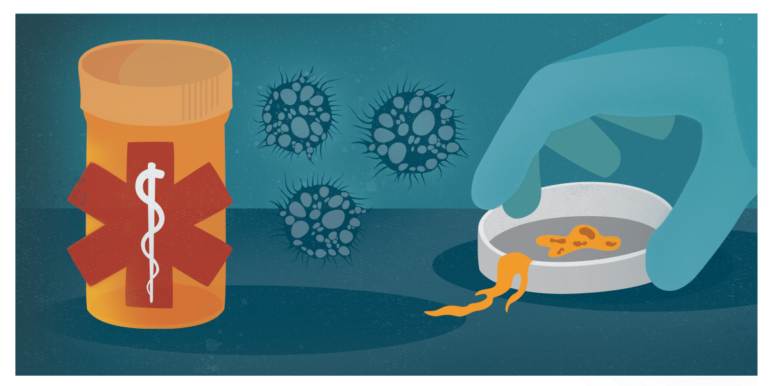

Health and Medicine Guide: Chapter 1
Read this article in
Guide Resource
Investigating Health and Medicine
Chapter Guide Resource
Health and Medicine Guide: Preface
Chapter Guide Resource
Health and Medicine Guide: Introduction
Chapter Guide Resource
Health and Medicine Guide: Chapter 1
Chapter Guide Resource
Health and Medicine Guide: Chapter 2
Chapter Guide Resource
Health and Medicine Guide: Chapter 3
Chapter Guide Resource
Health and Medicine Guide: Chapter 4
Chapter Guide Resource
Health and Medicine Guide: Chapter 5
Chapter Guide Resource
Health and Medicine Guide: Appendix
Regulating Drugs: Development & Approval
Tip 1: Dig Deeper into Development & Approval
If your story is about drugs, it is essential to delve into their development and approval history. There’s a trove of valuable information. Although all countries have their own regulatory agency (see Appendix), the work by the US Food and Drug Administration (FDA) and European Medicines Agency (EMA) has great influence on the worldwide pharmaceutical market.
Evidence submitted by the industry to regulatory agencies to prove product safety and efficacy may be public and available on regulators’ websites, even if it often doesn’t appear in post-approval marketing materials.
The drug development and approval process consists of five so-called phases shown in the illustration below. It is essential to dig deeper in all these stages, starting with randomized controlled trials (RCTs), the “gold standard,” which are conducted during Phase II and Phase III. This is often where you find the best available evidence — evidence that frequently is better than what is going to be collected when the product is on the market. However, even RCTs can be “gamed” in ways that mislead. So a good deal of investigative medical journalism should not just focus on financial corruption or adverse drugs or device effects, but on whether clinical trials are flawed, left unreported when negative, or misinterpreted. Indeed, even some of the most cited RCTs published in prestigious medical journals have been inaccurate; for more on this see the influential article by John P. A. Ioannidis: Why Most Published Research Findings are False. In short, both the required methodologies and approval processes in these earlier phases are more rigorous and more revealing.

Illustration: Re-Check.ch
The approval stage creates major tension between public and commercial interests. The manufacturer will try to exert maximum influence on regulators, whose decision will determine not only whether the drug can be marketed but the uses for which it can be sold. Also, pharmaceutical companies notoriously flood regulators with a huge amount of documentation. Although that might sound like a good thing, in some cases it makes the agencies’ work more difficult, as their capacities are notoriously limited.
The first step is to take a close look at all the details of the approval process. Assess if standards have been met and if the sponsor obtained exceptional flexibility like derogations or concessions. For instance, regulators may have allowed the company to show the drug’s efficacy not based on its effectiveness in addressing the main goal, but rather based on results in reaching a “surrogate endpoint” or “surrogate outcome.”
Surrogate endpoints are indicators (often bio-markers such as blood tests) chosen by researchers because they are considered important contributors in the mechanism of a disease. For example, blood pressure may be used as a surrogate endpoint in a trial on cardiovascular drugs, because it is a known risk factor for heart attacks and strokes. The hypothesis is that if the drug shows an effect on the surrogate endpoint (such as high blood pressure), it will also have an effect on the clinical outcome (such as heart attacks and strokes). Unfortunately, in many cases a drug’s effect on a surrogate outcome won’t bring the expected benefit to patients, and may even harm them. Also, surrogate markers only examine benefit without addressing harm. So a diabetes drug could be shown to be extremely effective at lowering blood sugar (another surrogate marker for diabetics who tend to die of heart attacks and strokes), but that same drug could kill more patients by damaging their liver because other aspects of the mechanism of the disease have not been discovered or well-understood yet. That’s why any results obtained in a study that was designed with a surrogate endpoint must be taken with caution.
The Students 4 Best Evidence (S4BE) website is a good resource to learn the basics in this field, as it is both accurate and understandable for non-scientists. S4BE explains the pitfalls of “surrogate endpoints” with a classic example from the 1970s: “Patients suffering from arrhythmia (irregular heartbeat) are usually given anti-arrhythmic drugs to . . . ‘correct’ the heartbeat back to normal. Arrhythmia is a dangerous condition since it raises the risk of the patients suffering from sudden cardiac death. In the 1970s, a group of researchers were testing a new batch of anti-arrhythmic drugs and early results suggested that the new drugs were successful at normalizing the heart beat . . . Nevertheless, results later showed there was a greater mortality rate in the group receiving the anti-arrhythmic drugs compared to the group receiving the placebo. Therefore, heartbeat measurements were misleading and the drugs had actually been doing more harm than good.”
Once you have collected and analyzed evidence from clinical trials, it is crucial to compare data presented to the agencies with evidence published in the medical literature. Check for consistency and for discrepancies, and pay attention to every study submitted to the regulators. You might find out that a study that played a relevant role in the approval process was never published in a scientific journal, and that is often a red flag because not all results that agencies get have been or will be published. Manufacturers make sure favorable results are disseminated in scientific journals, but it is not always the case with unflattering results.
There is one famous case where unpublished data submitted to a regulator was overlooked, with damaging consequences. The painkiller Vioxx (rofecoxib) had been a blockbuster for Merck until the shocking findings in 2004 of David Graham, a scientist at the US Food and Drug Administration (FDA). Vioxx considerably increased the risk of heart attacks, and Graham estimated that up to 140,000 heart attacks and 60,000 deaths occurred because of the drug’s side effects. The company voluntarily recalled the drug from the market as Graham’s disclosures were announced. The Wall Street Journal reported that at least since 2000, four years before pulling the drug from the market, Merck knew that Vioxx considerably increased the risk of heart attacks and deaths but chose not to disclose the data. Leaked company documents showed how Merck instructed its sales representatives to avoid initiating discussions on these side effects. A December 2004 study, published in The Lancet by Swiss epidemiologist Peter Jüni and his colleagues at the University of Berne, demonstrated that the FDA should have known of Vioxx’s dangers, because at least part of the troubling and unpublished data had been actually submitted to the US regulator. Jüni and his colleagues wrote: “Our findings indicate that rofecoxib should have been withdrawn several years earlier. The reasons why manufacturer and drug licensing authorities did not continuously monitor and summarise the accumulating evidence need to be clarified.”
The Vioxx case made headlines worldwide and caused an avalanche of lawsuits, closed by Merck with record settlements. (See, among others, those reported in this Nature article and in this Reuters piece.) It also became an example of how things can badly go wrong. Among the many available resources on the Vioxx saga worth checking out are NPR’s special series Vioxx: The Downfall of a Drug; the transcript of David Graham’s testimony before the US Senate; and the BMJ article What Have We Learnt from Vioxx?
Another example of selective publishing of relevant evidence by the pharmaceutical industry is the case of the painkiller OxyContin, marketed by Purdue Pharma, which has become emblematic of the US opioid crisis. The company knew about significant abuse of its drug in the early years that followed its marketing approval in 1995, and the company concealed information, as investigations by journalist Barry Meier have shown. Meier began covering the marketing of the painkiller OxyContin and the resulting epidemic of opioid addiction as early as 2001 for The New York Times. He dug for years, writing a book on the topic which was first published in 2003, with a revised version in 2018: “Pain Killer: An Empire of Deceit and the Origin of America’s Opioid Epidemic.” In October 2020, the US Justice Department announced the resolution of its criminal and civil investigations into Purdue Pharma, resulting in criminal guilty pleas and a federal settlement of more than $8 billion.
Even though similar cases show the limits of the regulatory agencies’ work, the standards of the US federal regulator, the FDA, are among the most stringent and demanding in the world. The agency produces a lot of documentation, much of it published on its website. It is a useful source if you want to understand how a product arrived on the market. On any specific drug page, you’ll find a chronology with links to all relevant pieces of evidence that informed the long process of bringing a drug to market. To identify the studies considered during the approval process, pay particular attention to the FDA’s Approval Letters and to clinical and statistical reviews. But keep in mind that FDA work is not flawless, and that the agency depends on the pharmaceutical industry for much of its funding. As pointed out in a 2016 investigation by the Project On Government Oversight (POGO), FDA Depends on Industry Funding; Money Comes with ‘Strings Attached,’ over the previous two decades “user fees” paid by the industry climbed from 35% to 71% of the FDA’s budget for “review of human drug applications” under the Prescription Drug User Fee Act. This dependency and clear conflict of interest enhances Big Pharma influence, POGO found, and there are signs that FDA work may be increasingly compromised, as evidenced by a trend to lower the bar for drug approval, for instance by widening the criteria for a product to be approved under the “Fast Track” process.
Originally, Fast Track was invented with a noble purpose: to quickly bring new treatments to patients that would address unmet needs. A special procedure was introduced that accelerates approval by reducing the amount and quality of evidence the industry must submit. However, in recent years Fast Track became a shortcut for pharmaceutical companies, allowing them to skip or shorten in-depth assessments by regulators.
Further issues that require our attention when investigating drugs are described by Donald W. Light, Joel Lexchin, and Jonathan J. Darrow in Institutional Corruption of Pharmaceuticals and the Myth of Safe and Effective Drugs, a paper published in 2013 in the Journal of Law, Medicine & Ethics. Included in their list of issues is the fact that most new drugs approved by the FDA since the 1970s are no better for patients than previous drugs and that the bar for “safe” is low, given that approved medicines have caused an undisputed epidemic of harmful side effects, even when properly prescribed.
Combining in-depth research in both the FDA and EMA archives can bring real benefits to your journalism. If the FDA publishes many documents, the EMA can be a very interesting resource to access the clinical study report of a trial, typically a lengthy document that provides many details about the trial’s methods and its results. As underscored by researchers Peter Doshi (University of Maryland School of Pharmacy) and Tom Jefferson (Oxford University), the FDA “treats clinical study reports and other parts of the dossier submitted by sponsors as commercial confidential information and, therefore, not releasable under the US Freedom of Information Act. In contrast, the EMA interprets all documents, including clinical study reports, to be subject to its “reactive” freedom of information policy and is the only regulator in the world routinely releasing such data. However, the agency is dealing with a huge and growing number of requests.”
Only citizens of the European Union and persons (natural or legal) residing or having their registered office in an EU Member State have the right of access to EMA documents. Details about the procedure to obtain documents are available on the EMA website.
Doshi and Jefferson, who have substantial experience with the process, underline that the “release can take considerable time to occur and often only after a lengthy correspondence.” Also, pharmaceutical companies may object to the EMA releasing clinical trial data, and sometimes the conflict can end in court, as shown in a 2018 case involving the release by the EMA of clinical study reports on a drug for Duchenne muscular dystrophy.
Regulatory agencies are regularly criticized for their closeness to industry, and this applies to the EMA as well, even though the agency has recently made some efforts to increase communication about its handling of competing interests.
In addition to national agencies, international organizations play a role in many aspects of drug and medical device regulation, including certification, manufacturing, distribution, pricing, marketing, research and development, and intellectual property rights. Digging deeper into their work is worthwhile if you want to fully understand regulation and approval of a drug. It may help you ask the right question regarding key issues such as:
- Why did regulatory authorities require some data and not others?
- How does the product’s intellectual property affect its licenses and markets?
- Did the pharmaceutical industry try to influence the work of one of these organizations?
Here are some agencies to check out. Each of them has a wide range of competencies that cover different aspects of this market and that are described in detail on the agencies’ websites:
- International Council for Harmonisation of Technical Requirements for Pharmaceuticals for Human Use (ICH)
- World Health Organization (WHO)
- Pan American Health Organization (PAHO)
- World Trade Organization (WTO)
- World Intellectual Property Organization (WIPO)
Investigating Medical Devices
Medical devices comprise a vast range of equipment, defined by Daniel B. Kramer and colleagues as “health technologies that are not medicines, vaccines, or clinical procedures.” Investigating them means dealing with an under- regulated environment. It is undeniable that in past decades new devices have offered better alternatives for some conditions. But they do not always deliver benefits to patients and have exposed some to substantial risks, as shown in recalls of breast and artificial hip implants.
Standards in this area are much lower than they are for pharmaceuticals.
In 2016, the review Drugs and Devices: Comparison of European and US Approval Processes found that only about 2% of medical devices approved in the previous 10 to 12 years went through Premarket Applications, the FDA’s most rigorous process for device approval. The review, published in JACC: Basic to Translational Science, also reported that only 10% to 15% of FDA device submissions contained clinical data, and that 7% were exempted entirely from review. “When clinical trials are required for devices, they frequently do not meet the same strict standards for clinical evidence that are required for drugs,” the review found. “They are often nonrandomized, nonblinded, do not have active control groups and lack hard endpoints.”
The approval processes for medical devices in the EU and the US share some similarities. But there are also critical differences, as the same review stated: “Before approval of a medical device in the United States, a device must not only be shown to be safe, but efficacious. Medical devices approved in Europe need only to demonstrate safety and performance . . . A collateral effect of more ‘commercially sensitive’ regulations in Europe is that initial approval of US company-backed devices is increasingly being sought in the EU before application in the United States.”
The US and Europe lead the field, and although most national regulators have their own approval processes for medical devices, most countries tend to follow the FDA and EMA. In many countries, if a medical device has already been approved by the FDA and EMA it will benefit from a much shorter approval process.
Yet there are serious concerns about the appropriateness and effectiveness of both approval processes, as shown in Daniel B. Kramer, Shuai Xu, and Aaron S. Kesselheim’s 2012 review, How Does Medical Device Regulation Perform in the United States and the European Union? A Systematic Review. The authors concluded: “Existing studies of US and EU device approval and post-market evaluation performance suggest that policy reforms are necessary for both systems, including improving classification of devices in the US and promoting transparency and post-market oversight in the EU.”
In 2014, Oxford scientist Carl Heneghan joined an undercover investigation to expose how the regulation was so lax that packaging for fruit could be approved as a medical device. Jet Schouten, a journalist with Dutch public broadcaster AVROTROS, requested that Heneghan produce a faulty scientific report based on repurposing the bags used in the sale of mandarins as a transvaginal mesh, which is normally used to enforce weakened tissue in the pelvic area. And the test worked: Regulators didn’t anticipate problems in the approval process, and no questions were asked about safety.
Five years later, far more people are familiar with medical devices because of the Implant Files investigation by the International Consortium of Investigative Journalists (ICIJ), inspired by the work of Schouten. The project found that health authorities are failing to safeguard patients from medical devices that have been linked to more than 83,000 deaths and more than 1.7 million injuries in the past decade. The ICIJ published a publicly searchable International Medical Devices Database which contains product recalls, safety alerts, and field safety notices, data drawn from public sources as well as responses to freedom of information requests.
The ICIJ collaboration involved 36 countries, more than 250 reporters, and data specialists from 58 media organizations. Since the Implant Files investigation was published, regulators around the world have vowed to improve the oversight of medical devices.
To find out more about this ICIJ project and the tools the global team used and developed, see ICIJ’s Everything You Need to Know About the Implant Files and Lessons from Inside the Implant Files. The database and tools are good resources for journalists investigating related stories.
Tip 2: Search for Red Flags
During the approval process, pharmaceutical companies use a variety of techniques to achieve a favorable ruling. Marketing strategies and growing medicalization are used to interfere with the approval process. Here are three strategies they use:
- Enlarge the definition of the risks or sicknesses to be addressed in order to expand the potential value of the drug. See these classic examples on cholesterol, blood pressure, and blood sugar.
- Intervene and detect earlier; the typical examples are cancer screenings, health checkups, and genetic testing. Good reads here include HealthNewsReview.org’s Screening: How Overdiagnosis and Other Harms Can Undermine the Benefits; Scientific American’s Putting Tests to the Test: Many Medical Procedures Prove Unnecessary — and Risky; PBS’s The $200 Billion Perils of Unnecessary Medical Tests; and the Washington Health Alliance’s First Do No Harm.
- Increase the number of conditions for which the drug can be prescribed or used, a strategy known as disease mongering.
When taking a closer look at a drug approval process, focus on key aspects that will determine the market for the product, starting with its “indication.” The indication describes the condition for which a pharmaceutical product (drug, test, vaccine) should be used. If it is an approved indication, this means that regulatory authorities have reviewed the evidence submitted by the manufacturer for the treatment or prevention of a condition or a disease, and allowed the company to market the product for this specific use. Widening the indication is a common practice to expand a product’s market, and it often happens step by step, with the industry submitting new data to the regulators.
Keep digging and look at: the definition of the disease; how the risk for developing it is described and documented; the design of the clinical trials (outcomes, exclusion/inclusion criteria); the efficacy and safety data; and how study results are presented. If you are new to the health care beat, for a while you’ll have to rely heavily on help from independent scientists to analyze the evidence. With time, though, as any senior medical investigative journalist can tell, you’ll be increasingly able to spot red flags and independently assess the evidence. Your review may reveal that erroneous conclusions have been drawn about the risk-benefit ratio of a product and give you insight on how it happened.
Digging Even Deeper: Clinical Trials Databases
In 2005, the International Committee of Medical Journal Editors announced that in order for their studies to be published, “sponsors” who pay for the clinical trials would have to register clinical trials before they begin. Many journals will only publish the results of trials that have been pre-registered. Currently there are 24 registries (national, regional, and international; here is the list). WHO’s Clinical Trials Search Portal provides access to a central database containing datasets provided by 17 registries, with links to the complete original records. Some companies run their own registries, like GlaxoSmithKline and Eli Lilly. ClinicalTrials.gov was the first online registry of this kind and remains the largest and most widely used. The US National Institutes of Health and the FDA worked together to develop the site, which was made available to the public in February 2000. If you are considering an investigation into a specific class of drugs, or a medication that you came across, it is worth starting with ClinicalTrials.gov.
We’ll be looking at this in more detail in the next section, but when searching clinical trials databases, take a closer look at:
- Study design.
- Number of participants in the trial.
- Patients’ inclusion/exclusion criteria from the study.
- Research centers involved.
- History of changes.
- If the trial is still ongoing.
- If results were published.
- Endpoints: primary, secondary, combined, surrogate. It is crucial to understand the concept of endpoint if you want to investigate health and medicine. According to the Principles of Translational Science in Medicine, “Clinical endpoints are distinct measurements or analyses of disease characteristics observed in a study or a clinical trial that reflect the effect of a therapeutic intervention.” Endpoints can be hard (objective) or soft (subjective). In some cases surrogate endpoints are used rather than clinically important outcomes.
You can find changes in study design by comparing clinical studies as recorded in the registers with the same studies as they were later published in a scientific journal and/or submitted to regulatory agencies. As mentioned, studies do not always end up being published by academic journals. Lack of publication and changes in studies’ design are often interesting red flags; it might indicate that problematic results have not been revealed.
During the approval process, advisory committee meetings take place, and their minutes can be revealing, as regulators often see potential problems and ask the industry interesting and sometimes inconvenient questions. Such minutes and related documents will give you valuable insights into issues and tensions. The FDA, EMA, and WHO websites are a treasure trove of information and possible leads.
To learn about the WHO’s role in drug regulation worldwide, see Drug Regulation: History, Present and Future. The WHO also manages the Essential Medicines List and the List of Essential Diagnostics, defined by the agency as “core guidance documents that help countries prioritize critical health products that should be widely available and affordable throughout health systems.” Both guidance documents have a big impact on the global pharmaceutical market.
Tip 3: Get Unpublished Data
Not all documents may be part of the visible public record, but they can normally be obtained from the FDA and EMA through a freedom of information (FOI) request. Each time you make such a request you may be contributing to the common good because some requests may be made publicly available on the agency website.
With iFOIA, developed by the Reporters Committee for Freedom of the Press, registered users can create, send, maintain, and share US requests. You’ll find plenty of FOI law tips and resources in GIJN’s Global Guide to Freedom of Information. Also consider using the South African Promotion of Access to Information Act (PAIA) that interestingly applies to private bodies, too. Although the industry is resisting requests for full disclosure on the grounds this may damage intellectual property rights by exposing industrial secrets, if your investigation focuses on a company with headquarters in South Africa, a PAIA request is worth trying.
If you decide to file a FOI request with the FDA, consider asking for access to email correspondence and technical documents like the statistical Data Analysis Plans (DAP) of clinical studies. In 2011 we obtained the DAP document Merck submitted in order to get approval for the HPV vaccine Gardasil. As we noted in the journal BMJ Evidence-Based Medicine, the document showed a significant methodological adjustment was introduced during the Phase III trials, where a pre-specified analysis was replaced by a lower value indicator. This so-called “outcome switching” is a controversial practice and is a potential problem in clinical studies reporting, as it can distort the evidence.
An example of the potential consequences of outcome switching is discussed in this 2018 brief from Enago Academy about the antidepressant Paroxetine, with links back to the original studies. The New York Times also addressed the issue in a 2015 piece by Benedict Carey.
To learn more about this problematic, though relatively common, practice, have a look at the COMPARE project that was done by a team of academics, medical students, and programmers based at the Oxford University’s CEBM.
Unpublished clinical studies data can be important when assessing the real risk-benefit profile of a drug. But obtaining the data and performing an assessment can be difficult, even for experienced scientists. See, for instance, Strategies for Obtaining Unpublished Drug Trial Data: A Qualitative Interview Study. Note, for example, that the FDA is legally allowed to neither confirm nor deny the existence of a study in response to a FOI request. Recently, academics and investigative reporters have joined forces to locate missing or incomplete datasets.
One example is the Tamiflu campaign by the British Medical Journal, aimed at pressuring drug companies to release the underlying trial data for two globally stockpiled anti-influenza drugs. For further understanding of why the lack of transparency matters and also great resources for underreported stories see: Restoring Invisible & Abandoned Trials Initiative, AllTrials and TranspariMED.
















